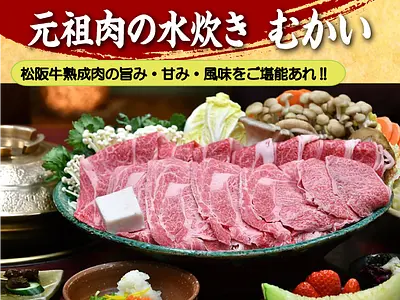We featured Akafukumochi 's Tsuitachi-Mochi ♪ ~You can only eat it once a year! ~
掲載日:2023.03.08
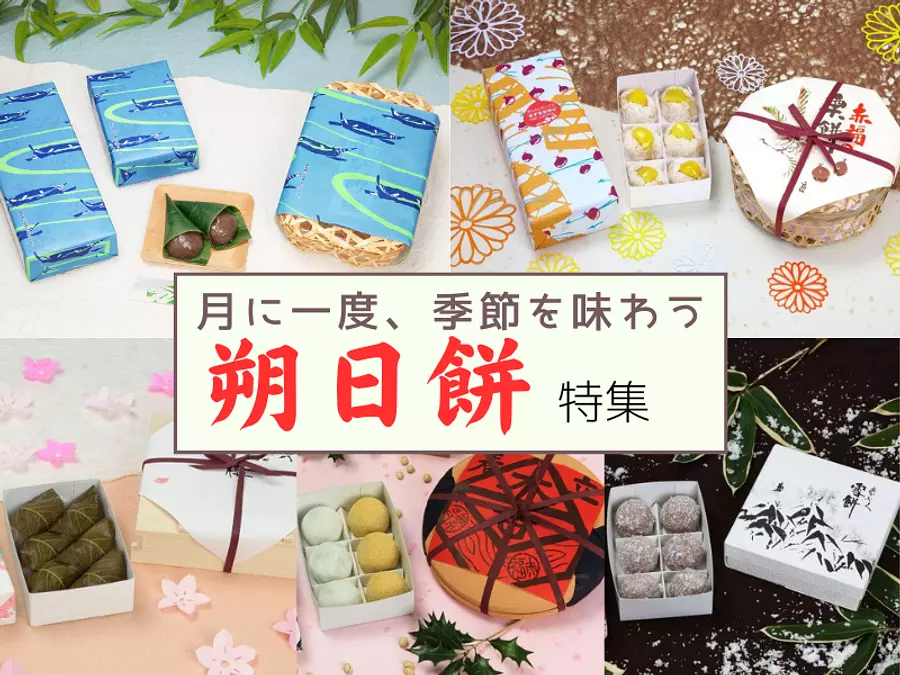
In Ise, there is still a tradition called ``Tsutachi Mairi,'' in which people wake up earlier than usual on the first day of every month and visit the shrine.
At Sakuhi Mairi, we give thanks for the month we have had and pray for a safe month ahead.
At Akafukumochi Store, "Tsuitachi-Mochi" is prepared on the first day of every month except New Year's Day, so why not enjoy "Sakubi Mairi" and "Tsuitachi-Mochi"?
Click here for the official Akafukumochi (Tsuitachi-Mochi) page!
In fact, you can pre-order it at some directly managed stores!
*When purchasing Tsuitachi-Mochi at our main store, we will be distributing numbered tickets and dividing the sales time to prevent crowding in order to prevent the novel coronavirus.
We covered the efforts to restart Tsuitachi-Mochi sales, which had been temporarily suspended!
“We want to deliver Tsuitachi-Mochi to everyone even during the coronavirus pandemic!” Utilization of digital tools by the long-established store “Akafukumochi” started with a strong desire
Click here for an article that thoroughly explains how to make a reservation for Tsuitachi-Mochi and introduces stores that sell it!
What is Akafukumochi 's limited edition mochi "Tsuitachi-Mochi"? We will introduce how to purchase/reserve and monthly mochi!
index
Kisaragi: First day of spring Daikichi mochi
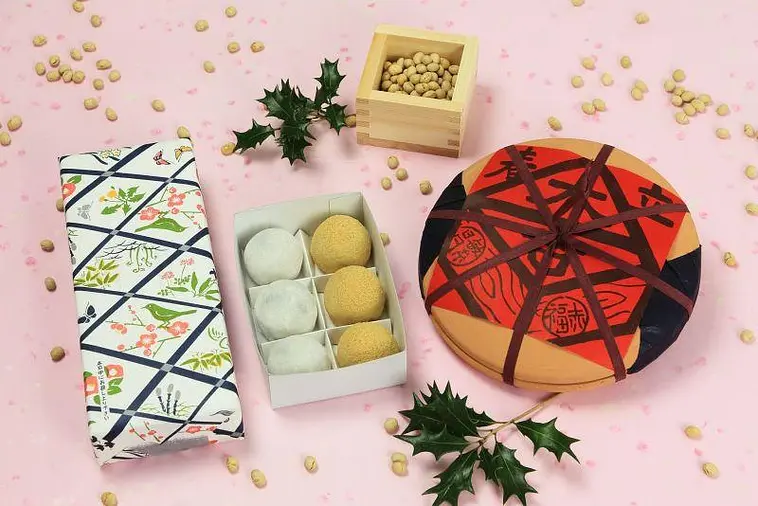
``Risshun'' (February 4th) is the ``New Year's Day'' of the 24 solar terms.
On New Year's Eve, the day before, it was customary to scatter beans to ward off the evil spirits of the past year, and to eat black beans to ensure a healthy new year. This is "Setsubun".
February's Tsuitachi-Mochi is "Risshun Daikichi Mochi."
There are two types of Mame Daifuku made with black soybeans and soybeans.
One is a mochi dough wrapped around large black soybeans and crushed bean paste, and the other is a mochi dough wrapped in strained bean paste and soybeans and sprinkled with soybean flour. Enjoy the texture of rice cake and beans.
``Demons are outside, fortune is inside.'' I sincerely pray that you will spend your time diligently and prosper even more.
Yayoi: Mugwort mochi
Since ancient times, mugwort has been called a ``weed to ward off evil spirits'' and has been eaten for a long time.
In the past, mugwort rice cakes were offered to Hina dolls on March 3rd in order to pray for the prosperity and good health of their descendants by making mugwort rice cakes, which are highly fragrant and highly fertile.
Tsuitachi-Mochi of the month in March is ``Mugwort Mochi.''
The sweet bean paste is wrapped in mochi dough that retains the color and aroma of mugwort.
This mochi confectionery is associated with the Joshi Festival (Peach Festival), which prays for the healthy growth of girls.
Uzuki: Sakura mochi
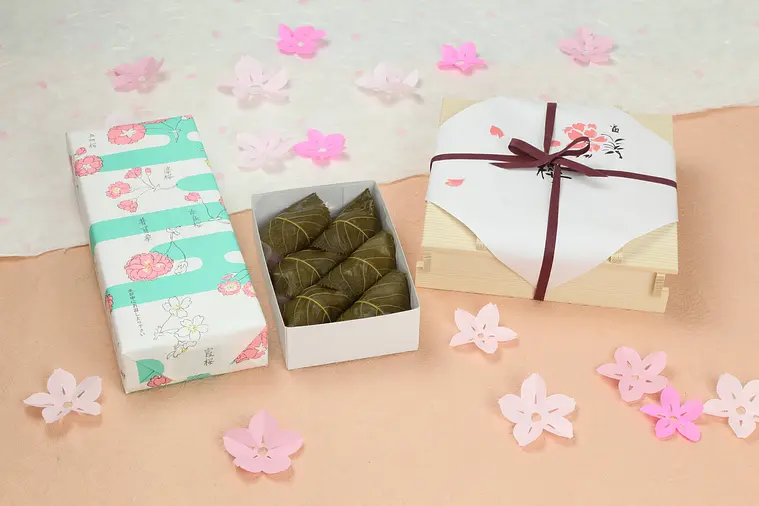
April is the season of cherry blossoms, the queen of hundreds of flowers.
Of all the sweets associated with cherry blossoms, Sakura Mochi is the most simple and popular.
April's Tsuitachi-Mochi is "Sakura Mochi".
The sweet bean paste is wrapped in sticky rice dyed a faint cherry blossom color. It is wrapped in carefully selected cherry blossom leaves, so please enjoy it with the cherry blossom leaves.
We hope you will be able to enjoy the spirit of spring.
Satsuki: Kashiwa mochi
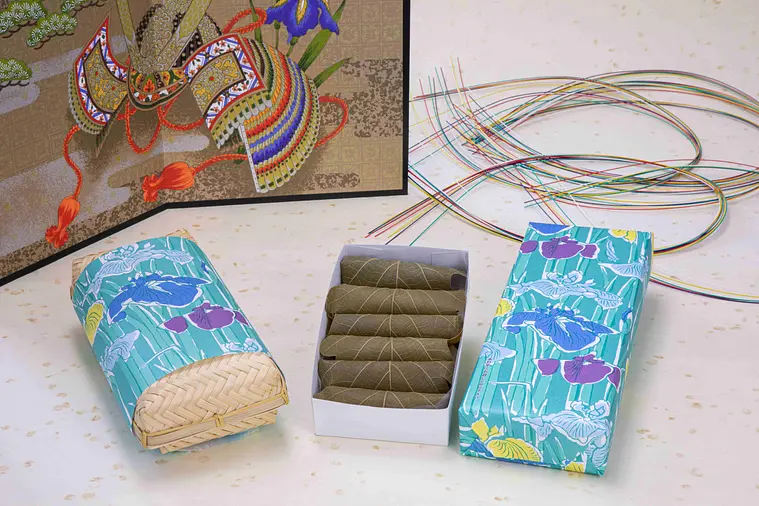
Fresh green in May. Kashiwa mochi is an essential part of Boy's Festival, which celebrates children's growth.
Oak leaves do not wither and fall until new leaves grow and are replaced.
In addition, the shape of the leaves resembles the kashiwa hands that are struck during shrine visits, so it is said to be auspicious for praying for the prosperity of one's children and grandchildren.
Tsuitachi-Mochi of May is ``Kashiwa mochi'', which is a rice cake filled with strained bean paste wrapped in oak leaves.
Minazuki: Mugitemochi
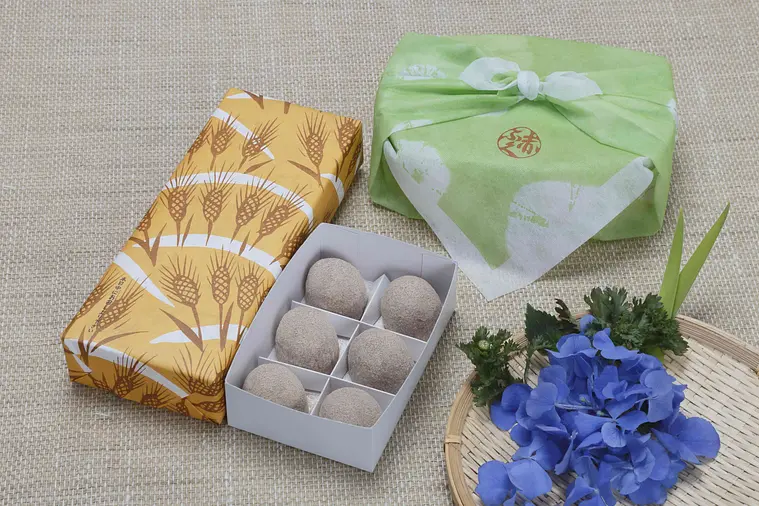
June is also called ``Wheat Autumn''.
This is because it is the season for harvesting wheat.
For farmers, wheat was a valuable grain that could be harvested before the storm and flood season.
After the busy season of rice planting and barley harvesting, people made ``mugitemochi'' to celebrate their bountiful harvest.
June's Tsuitachi-Mochi is a ``mugite mochi'' that has a long history as a seasonal sweet.
It is a simple mochi made by wrapping brown sugar-flavored bean paste in mochi dough containing glutinous wheat flour and sprinkling fragrant wheat flour on top. Enjoy the aroma of wheat.
Bungetsu: Sasa warabi mochi
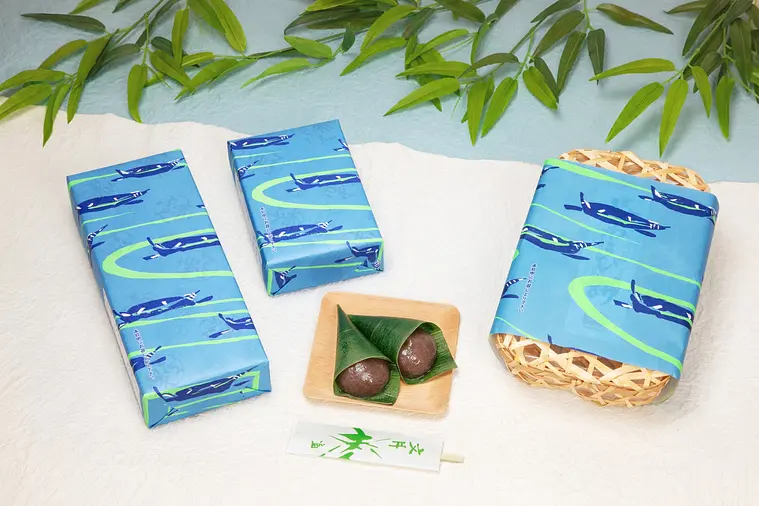
July, Tanabata, bamboo decoration.
It is said that the straight growth of bamboo and its refreshing scent have divine power.
Tsuitachi-Mochi in July is a cool-looking "sasa warabi mochi."
It is warabi mochi filled with strained bean paste and wrapped in bamboo leaves in honor of Tanabata.
Serve well chilled.
Hazuki: Hassaku Awamochi
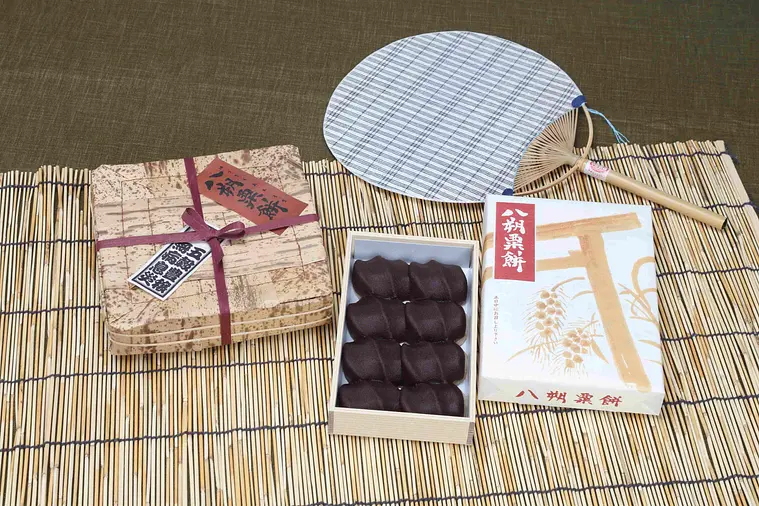
``Hassaku'' refers to the first day of the eighth month in the lunar calendar.
And since ancient times, it has been a custom to celebrate by giving gifts of new grain.
It was also called ``Tanomono no Sekku'' because it was a celebration of rice and asking for favors.
It is also said to be the beginning of today's mid-year gift.
In ancient times, in Ise, among the five grains, the first fruits of rice and millet were offered before the shrine to pray for a rich harvest.
Also, among the ``Sakubi Shrine'', August 1st is especially called ``Hassaku Sangu'', and many worshipers come to worship, and it is customary to eat awamochi.
Inheriting this custom, Hassaku Awamochi is made every year.
It is made by leaving the grains intact and topped with traditional brown sugar-flavored bean paste.
Enjoy the graininess of millet and the flavor of brown sugar.
Nagatsuki: Hagi mochi
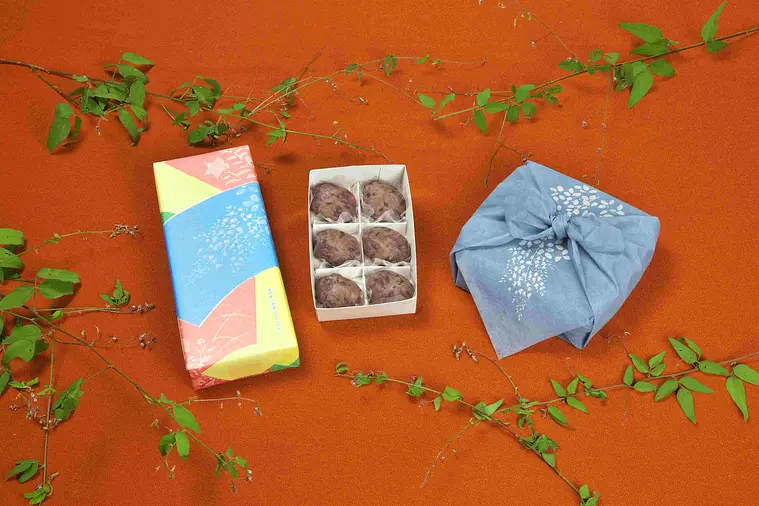
Minori's autumn. Ancient people celebrated the joy of harvest by making Ohagi.
The Japanese clover is one of the seven autumn herbs, and the word autumn is written on its crown.
It is a flower that has been loved since ancient times.
Ohagi originates from the color and shape of the crushed red bean paste that resembles the blooming Japanese bush clover.
Tsuitachi-Mochi in September is ``Hagi no Mochi''.
Ohagi is a familiar seasonal sweet.
``Hagi no Mochi'' has a slightly salty taste and goes well with warm tea.
Kannazuki: Chestnut mochi
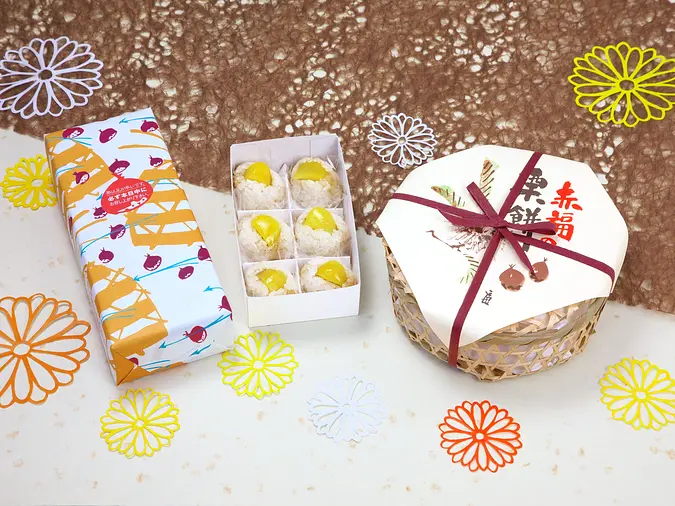
The current October, September 9th of the lunar calendar, is the Chrysanthemum Festival, the most important of the five festivals.
On this day, people drank sake topped with chrysanthemums, ate chestnut rice and chestnut sweets, celebrated the festival, and prayed for eternal youth and longevity.
Following this custom, Tsuitachi-Mochi in October is called ``Kurimochi''.
The dough retains the texture of glutinous rice, wrapped in flavorful chestnut bean paste, and topped with candied chestnuts.
Enjoy autumn with the taste and aroma of carefully selected chestnuts.
Shimotsuki: Ebisu mochi
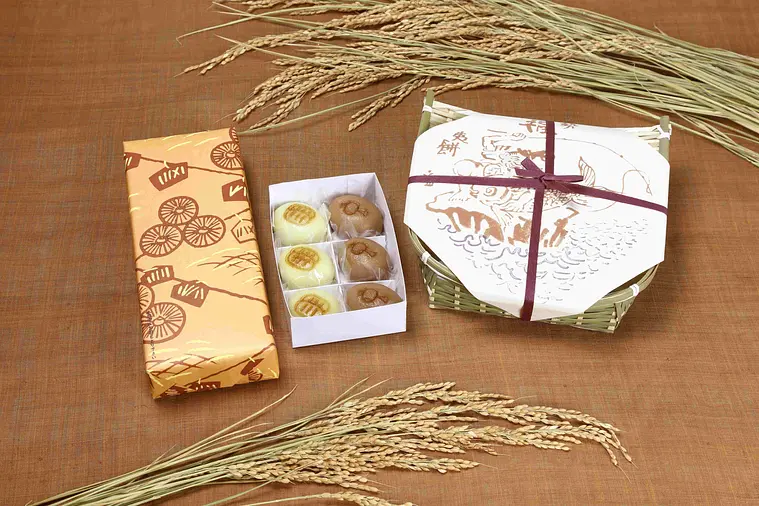
November is the month of Ebisu-ko, a festival celebrating prosperous business.
“Ebisu Moon” is important for merchants (Akindo).
Therefore, Tsuitachi-Mochi in November is ``Ebisu Mochi'', named after Ebisu, the god of commerce.
The mochi is shaped like a hammer, and both the bean paste and the dough taste like brown sugar.
The mochi is shaped like a golden oval and has a refreshing yuzu flavor.
We pray for your business prosperity and good fortune.
December: Snowcake
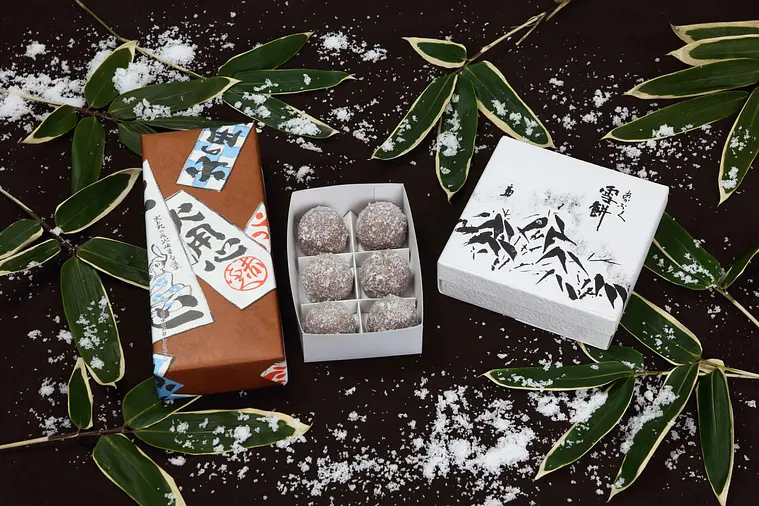
According to the calendar, December means "heavy snow."
The winter shogun has arrived even in the warm Iseji area, and it is now the season when the weather becomes bitterly cold.
December's Tsuitachi-Mochi is called ``Yukimochi'', which is associated with this season.
It is made by wrapping strained bean paste in mochi dough containing sorghum flour and then sprinkling it with mochi flour.
This rice cake is shaped like the earth covered with a light snow.
As the end of the year approaches and things get hectic, this year is coming to an end.














